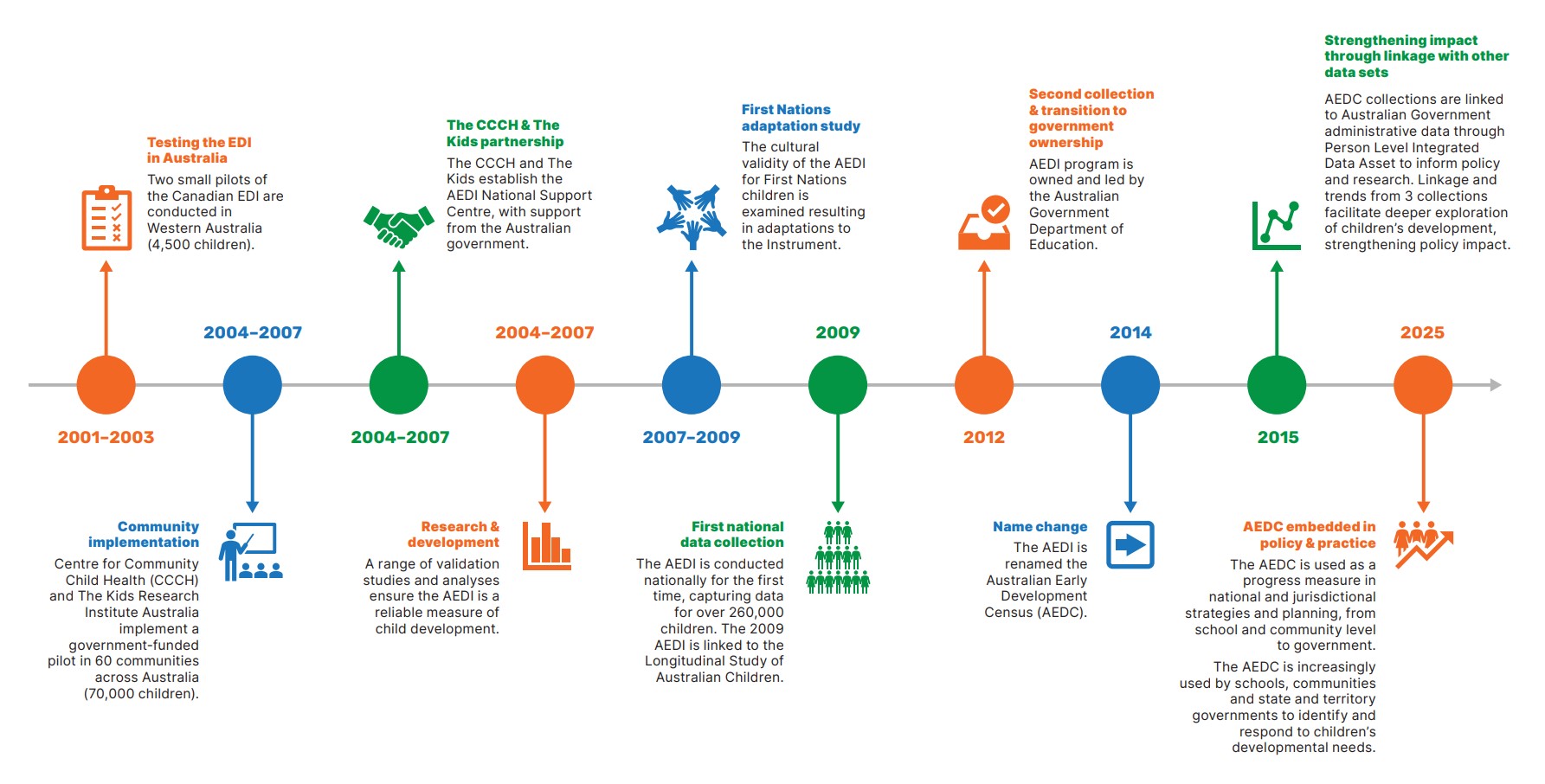How was the AEDC developed?
The Early Development Instrument (EDI) was developed in Canada in the 1990s by Dr Dan Offord and Dr Magdalena Janus to measure the developmental health and wellbeing of populations of young children.
An adapted version of the EDI, the Australian version of the Early Development Instrument (AvEDI), was established soon after and piloted with a small sample of children in Perth in 2001-2003. Between 2004-2008, the AvEDI was used in over 60 communities across Australia, with implementation support provided by the Centre for Community Child Health and The Kids Research Institute Australia in partnership with the Australian Government.
Many other countries have also adapted the EDI for their own use.
In 2009, the Australian Government funded the national rollout of the AvEDI in partnership with all states and territories, in a program called the Australian Early Development Index. The program officially became the Australian Early Development Census (AEDC) in 2014.
The Reliability and Validity of the AvEDI fact sheet outlines the development and validation of the AvEDI in more detail.
AEDC timeline

Relevance to First Nations communities
The Indigenous Adaptation Study was carried out in 2007 to adapt the AvEDI to consider cultural differences on child development influences. This study was an important step in ensuring the cultural accuracy of the AEDC and its effectiveness in empowering communities to support the development of all children in their early years.
The study was overseen by a reference group of First Nations peak bodies and grassroots community organisations, parents, unions, government and non-government stakeholders.
This study led to the following changes:
Introducing First Nations school staff as cultural consultants to help teachers complete the AEDC for First Nations children.
Additional information in the teacher guide for cultural considerations for specific AEDC questions.
Inclusion of additional items in the AvEDI of relevance to understanding First Nations children’s school attendance and outcomes.